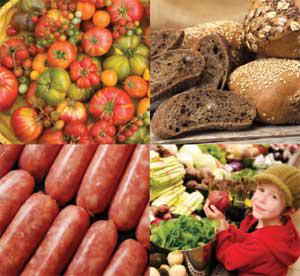Partnering with Customers

Download a pdf of this article
Have we seen the worst of the recession? The answer is debatable and one that will truly be known only in hindsight. What seems safe to say is that the economic turmoil will have lasting effects on how consumers view shopping. In particular, value is likely to remain a key decision-making criterion as shoppers consider how they spend their dollars.
What can our fresh, perishable departments do to meet the needs of a more cautious, value-oriented customer? How does this new world view affect what we as co-ops provide?
While our core consumers may be suffering economically, their beliefs around the importance of high-quality, sustainably produced food remain unchanged. And many of the drivers attracting midlevel consumers to our sector —such as health concerns and renewed interest in local foods—still exist. Our opportunity now is to partner with our customers as they look to eat better at reasonable cost.
We know that people are cooking at home more often. Some reports show the growth rate for unique visits to food sites on the web has grown at twice the rate of total U.S. Internet use growth. Of particular note is that people are now more comfortable cooking with fresh ingredients and that the organic sector, though slowing, continues to perform well. Other reports show lunches prepared at home have reached an all-time high, with over half now being eaten at the workplace.
On trend- Make consumer recipes available, especially those that are low-cost, low-effort.
- Use sale pricing and prominent placement to feature items that are common in at-home cooking, such as cheeses, ground beef, poultry, tomatoes, onions and herbs.
- Offer quality lunch items, such as snacks, breads, sliced deli meats, and cheeses.
- Offer oven-ready items, including cooking directions, in the meat case for consumers to cook at home.
- Highlight local, the new organic for some consumers. Heirloom varieties of vegetables are of particular interest as people strive to buy less but eat better.
- Be price-conscious in key areas. For example, lead the produce department displays with price points that compare most favorably with conventional store products.
This shift toward cooking at home and brining lunch—largely due to shrinking disposable incomes—has caused a shakeout in the restaurant/hospitality world, particularly in the fine dining sector. Fast casual concepts such as Panera Grill and Subway are leading the growth curve and are expected to grow nearly 5 percent this year. In fact, sandwich growth in general continues to climb, with chains showing 19 percent growth.
To combat the shift toward fast casual and limited-service restaurants, casual dining restaurants are launching a price-driven strategy and upping the ante with low-priced meal bargains and increased advertising.
On trend- Focus on “eat now” meal options in the deli, particularly your sandwich program, with special attention to speed of service and creation of value, such as bundled meals and smaller portions at reduced prices.
- Growth of in-store bakery sales is projected to slow but still reach 5–6 percent overall. The whole-grain market continues to lead the charge, with nearly 17 percent growth since 2007 to just over $5 billion in 2008. Gluten-free baking continues to be largely recession-proof as well. Interestingly, the market for midmorning snacks is booming; this suits bakery particularly well and leads to opportunities for sales in energy and granola bars.
- Offer in-house gluten-free baked goods.
- Control portions and ingredients rather than increasing prices if you are at or near current market value.
In times of stress it’s back to basics for consumers; comfort foods are back in style. Even the cover of Gourmet magazine recently featured a photo of spaghetti and meatballs. Many cooks are seeking updated, healthier versions of classic dishes, such as meatloaf or macaroni and cheese, and are willing to be a little adventurous in adding ethnic or exotic ingredients into these more traditional recipes (think blue cheese in macaroni, or sundried tomatoes in meatloaf). Peasant style and street foods like tamales, falafel, and hummus are increasingly common and considered a comfort food of sorts.
Seek to provide comfort foods that match the demographics for your market area, considering the ethnic makeup of your community and age of your average shopper.
On trend- Have comfort foods available in the deli, including updated versions of historically popular recipes, common ethnic choices, and appropriate side dishes.
- Feature ingredients with integrity, such as grass-fed beef, free-roaming poultry, or locally sourced dairy products.
- Create in-house or signature sausage programs, particularly breakfast sausage.
Indulgences and rewards are not to be overlooked. Consumers don’t want to give up on everything, just to manage things in moderation. Many predict that chocolate and small desserts will be bigger than ever this year. One famous chef recently called this “indulgence on a dime, instead of on a dollar.” Make sure to offer small, affordable rewards to your shoppers, like wholesome, snack-size baked goods and smaller-portioned desserts.
Authenticity, high-quality product, and a holistic approach to food and community all position our fresh departments well for the future. If we can excel at the basics, control costs, and recognize that we are partners with our shoppers in their pursuit of healthier lifestyles, then shoppers will understand that value is a function of more than simply price.







